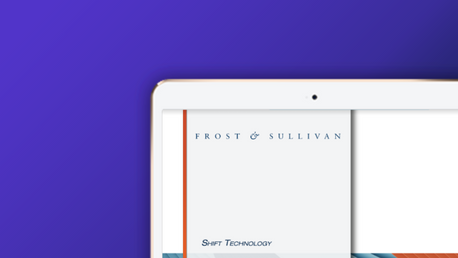The insurance industry has been suffering from a well-known talent shortage. In 2021, over 50% of P&C insurance firms planned to hire aggressively to make up their talent gap. In 2022, with an historically tight labor market, insurers still need to compete extensively to maintain an experienced workforce.
Enter automation. Many insurers have been leery of adopting automation, especially in the claims department, because of the unspoken fear that it would cause their best and most experienced employees to become redundant. Unfortunately, it may be true that automation is driving increased employee turnover within claims – but the reasons aren’t what you would expect.
Right now, automation is still underutilized within the insurance industry. Although most firms have adopted automation, research from Aite-Novarica shows that only 7% of claims are fully automated. Ironically, it could be the lack of full automation that’s contributing to high turnover rates within the claims department.
Insurers must provision the workforce beyond automation
The main problem with automation as it currently exists at most insurance organizations is that it exists separately from artificial intelligence. It’s governed by a set of rigid constraints, and it doesn’t have the power to navigate any departures. Anything that goes beyond the confines of IF→THEN is escalated to human intervention.
This means that claims adjusters are often inundated with alerts, often regarding issues as miniscule as spelling errors. These alerts keep claims adjusters from more complex and important tasks – and when the minor issues are fixed, the claim can’t be handed back over to automated processes. Any claim that gets escalated, no matter how simple, must be shepherded to its conclusion by a human adjuster.
This is a demoralizing workflow, and it may be a factor in employee turnover. Young employees – the kind that insurers would like to invest money training and retaining – are digital natives who are aware of the potential of technology. If their work environment doesn’t live up to that potential, and instead inundates them with what are essentially data-entry tasks, then how can they be expected to stick around?
Intelligent decisioning reduces turnover – and makes space for better decisions
Intelligent decisioning is what happens when insurers add AI models to their existing automation technologies. These models are trained on insurance data, so they can make decisions that resemble the logic of an experienced claims adjuster. This means that when they encounter something unexpected, they can solve the issue without escalation.
Apart from the many advantages that this technology offers, insurers may find that intelligent decisioning helps them create a happier and more productive work environment. That’s because the solution obviates the necessity of dealing with simpler (read, “boring”) claims, and makes solving more complex claims easier. Additionally, when adjusters have more time to devote to complex claims, they end up making better decisions – resulting in lower loss costs and happier customers.
Users will typically experience intelligent decisioning as a process of “bringing decision points forward.” In other words, they’ll be presented with a fully assembled case – including all the information they need to know about the claimant, their policy, and the triggering event – and a recommended claim decision. Adjusters only need to decide whether to accept the recommendation.
Do intelligent decisioning tools need to call for help?
In rare cases, the decisioning platform will need access to wider information, such as an external database, or it may need human resources to interpret a piece of data. Here, the adjuster will know exactly what they need to provide and how to do it. After intervening, the AI can pick up where it left off. The adjuster no longer needs to close any claim that gets escalated. Instead, the AI adapts to orchestration.
Finally, the AI can direct claims handling in a flexible and intelligent manner. At the point of FNOL, intelligent decisioning can assign a claim to whatever resource fits best. This might mean letting a policyholder self-manage a claim, directing a claim to a vendor program, or diverting a claim to an adjuster with specialized expertise necessary to handle a more complex case. This means that claims can be matched with adjusters according to their ability and according to their existing workloads.
Augment your workforce with Shift claims decisioning solutions
Claims adjusters don’t want to be overworked, they don’t want to spend all their time dealing with simple claims, and they don’t want to wrestle with inflexible automation tools. Shift Technology can change all of this. Our solutions integrate with carriers existing rules-based automation tools and add the power of intelligence, enabling digital-native claims adjusters with powerful tools to optimize their workloads and workflows.
Keeping valuable insurance talent means investing in the tools that keep them happy and productive. For more information about Shift Technology and the way our tools can transform the claims process, request a demo today.


.jpg)